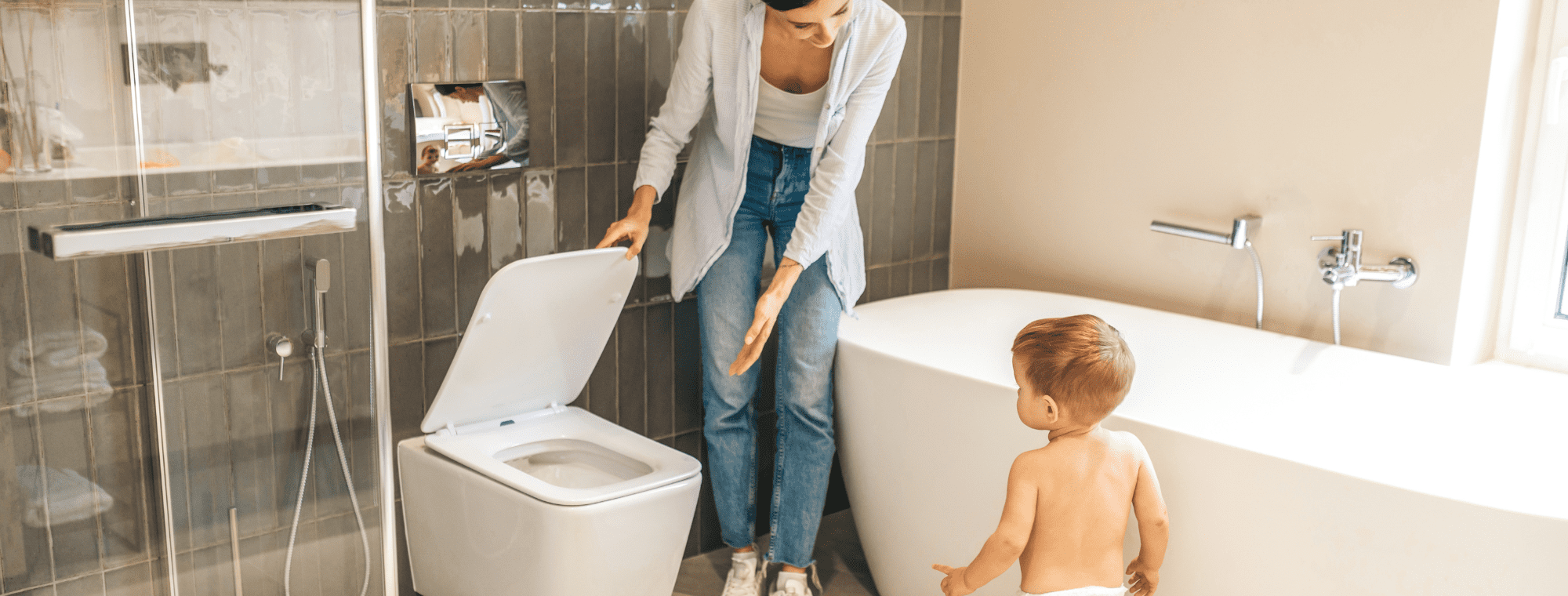The thought of toilet training can be daunting for any parent. There are so many questions: when should I start? How do I know when my child is ready? What if they have accidents? It’s no wonder that many parents are totally put off toilet training until their child is a little older.
In many parts of the world, including China, parts of Africa, India, and South and Central America, they use a method called Elimination Communication (EC or assisted infant toilet training). This is becoming increasingly popular in the West. It involves toilet training from birth by following the baby’s cues (think of how many nappies and bottom changes you can avoid!).
The process involves observing your baby’s signs and signals, providing cue sounds and elimination-place associations, and can be done with or without any nappy use.
Instead of using nappies, these babies learn to go in an appropriate receptacle from as little as two weeks old. Elimination Communication or EC is a method that involves a parent paying close attention to their baby, learning when they are about to go to the toilet, and responding to these signs by making cue sounds like “pssss”, and holding them over a toilet or potty – instead of relying on their nappy. If the baby does this right, it is rewarded with a little extra praise and affection.
This method is different to toilet training which involves the child learning to control their bladder and bowel movements and use the toilet. The focus of Elimination Communication is on connection with your child – as its name suggests.
There are certain times of the day when a baby likely needs to go to the toilet:
- Straightaway or a few minutes after waking up
- Zero, five, 10 or 15 minutes after having their milk
- At frequent, regular times during the morning
- At less frequent, regular times in the afternoon, and
- Before, during or after their nightly feeding session
Babies also give subtle clues that they need to relieve themselves. They may:
- Squirm, fuss and make noises
- Tense their face or raise their eyebrows
- Frown or look like they’re concentrating
- Look intently at Mum or Dad, reach out, or shake their fist
- Reach for, or point at a potty or toilet
- Go still or quiet, or alternatively, suddenly get more active or agitated, or
- Stir in their sleep or wake up from a nap.
Generally speaking, EC can be practised from ages zero to 18 months, but there’s no rush to completely toilet train a child until they’re ready (which is often between the age of 18 months and four years). Elimination Communication, or Assisted Infant Toilet Training is a dedicated journey, but there are countless parents around the world who use this method successfully and lessen their use of disposable or reusable nappies.





